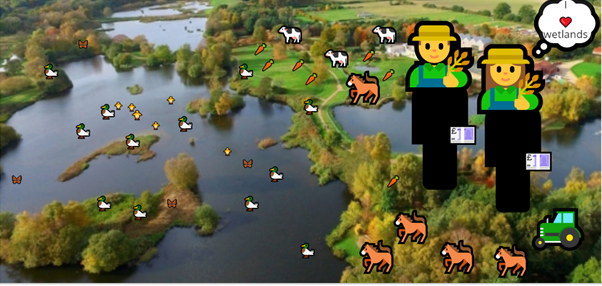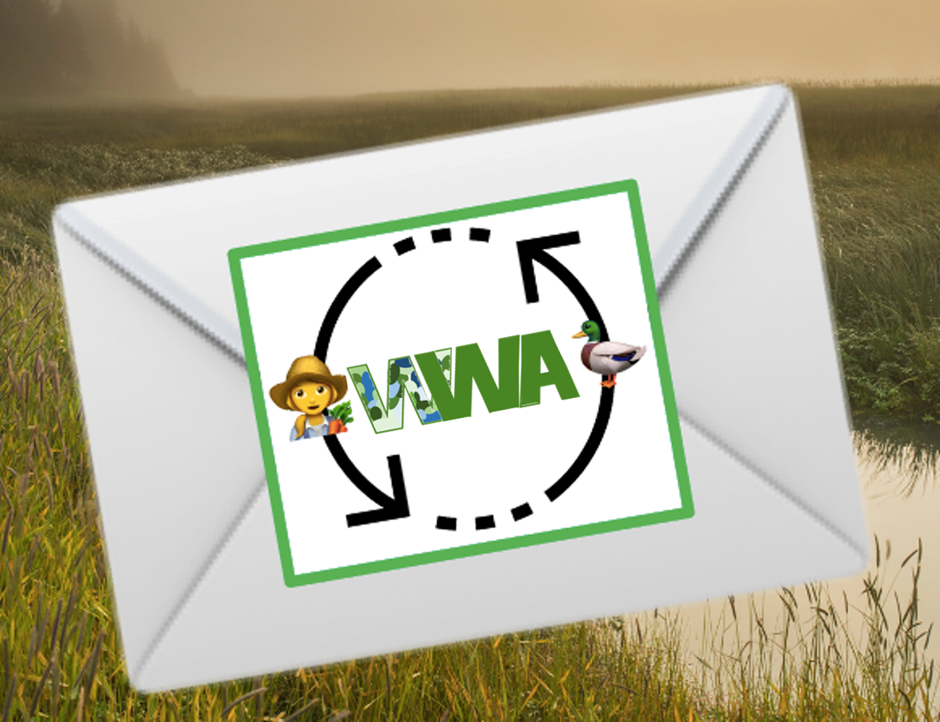Team 1B: How might we convince land owners (particularly small farmers) of the benefits of constructed wetlands?
Part 1. How might we?
The UK has lost more than 90% of its wetlands since the 18th century, with further degradation of those that remain. Constructed wetlands can help in meeting the potential for future restoration, and there is increasing scientific evidence on the benefits of constructed wetlands for wastewater bioremediation and flood management, driving interest from water companies in particular. We asked how sustainable uptake by landowners – specifically small farmers – can be encouraged. Current hurdles include poorly-pitched information (for example, focussing purely on biodiversity benefits rather than potential efficiency gains or new revenue streams for farmers), an opt-in approach whereby farmers must initiate the process and plough through lots of red tape, and, to some extent, a culture of distrust against government agencies.
Quotes from ‘Landowners’ incentives for constructing wetlands in an agricultural area in south Sweden’ – Hansson et al., 2012:
“We can’t play around with wetlands. Everyone wants food, so it is not right to put land under water”
“If you have good land, you don’t want to ruin it. If you have poorer land, no problem, just dig”
… our sprint question: “HMW convince land owners (particularly small farmers) of the benefits of constructed wetlands?”
Negative impacts and missed opportunities due to missing wetlands:
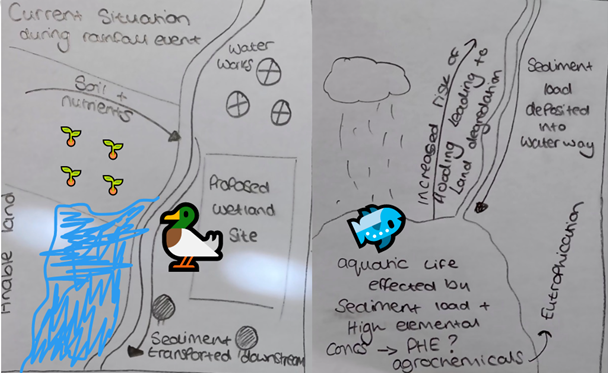
The problem:
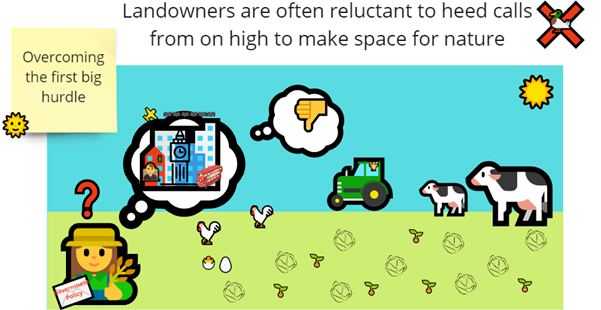
Part 2. Our solution
A Working Wetlands Alliance (WWA), using structured facilitation to streamline the provision of information and advice that is easily accessed, friendly and grounded in trust.
Steps:
- Formulation of a centralised and broad network of experienced advisors from the agricultural community – gather perspectives, compile and collate information for circulation, discuss outreach strategies…
- Entering farmers’ spheres of consciousness through outreach at events such as agricultural fairs, young farmers meetings – featuring water filtration demonstrations (like this and this), landowners experienced with wetlands sharing their insights, etc.
- Farm visits by land advisors, with a WWA ‘toolbox’ allowing them to pitch the concept successfully (e.g. did you know that wetlands prevent 90% of nutrient-rich sediment runoff?) and promote our events
- Celebratory events showcasing successful constructed wetlands (e.g. WWT’s Five Acre wetland at Slimbridge); in addition to illustrating the direct benefits of wetlands, this would encourage community feeling in local farmers and provide the opportunity for technical questions to be answered
- Ongoing support and advice, including some sort of verification for successful uptake
- Positive feedback, hopefully including buy-in from the general public who see benefits to the wider community
Step-by-step:
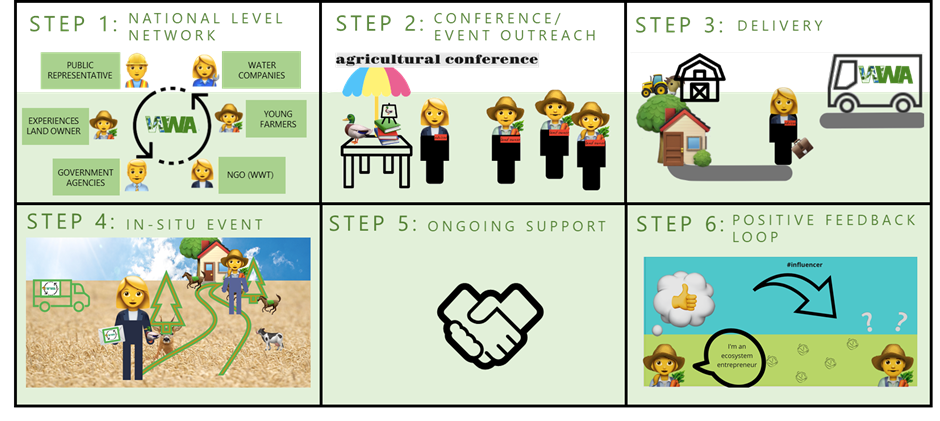
Part 3. Why it works
The Working Wetlands Alliance (WWA):
- highlights the considerable benefits that constructed wetlands can provide, and facilitates peer-to-peer communication and shared experience to validate this
- removes barriers – structural, financial, educational, and cultural – and the onus from farmers
- could help farmers navigate post-Brexit regulations and move towards targets in the 2020 Environment Bill
- supports long-term sustainability, rather than potentially reversed improvements at the end of 10-year management regimes purely for agri-environment schemes
Non-WWA farmer: “Farmers have to be alert and interested, as nobody will just come knocking at your door”
WWA farmer: “Not anymore, they came to me! And now I am an ECOSYSTEM ENTREPRENEUR”
… the future is in our (wet)lands
